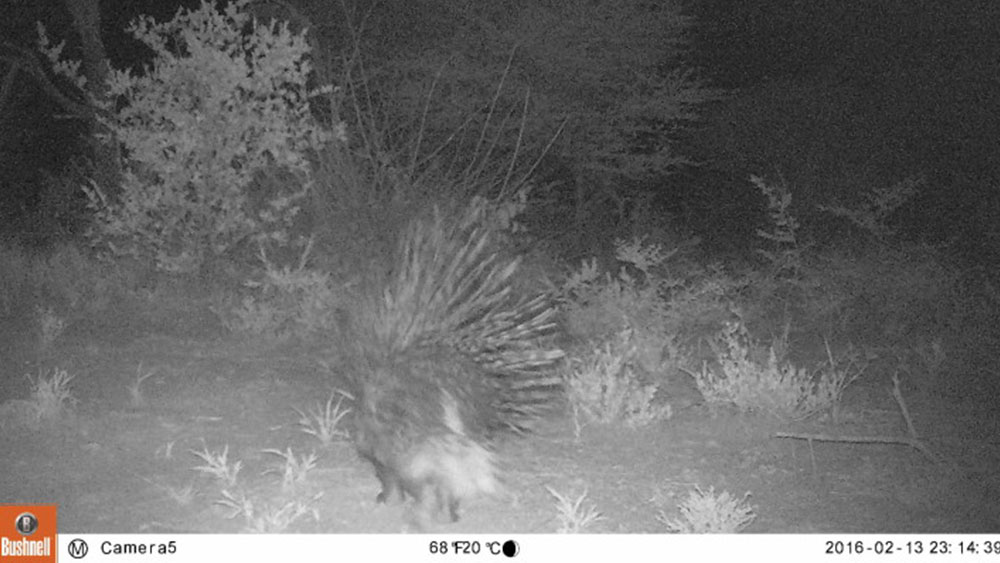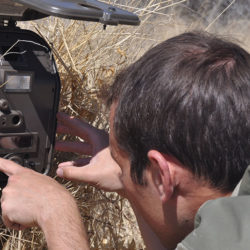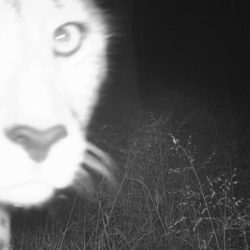Cheetahs, Camera Traps, & Communities Pt. 4
-

- by Dr. Louisa Richmond-Coggan April 21, 2016

The cameras for survey area 2 in the Waterberg Conservancy have now been up nearly 30 nights and will be coming down at the end of the week, so again we will be able to see what we have captured across the 160km². Before that we would like to introduce the ecology team that is at the heart of this project.
Getting to know the ecology team
I graduated with a BSc Geography from Lancaster University (2004) which included a project in the Mara Triangle, Maasai Mara, Kenya looking at cheetah behaviour in relation to presence of spotted hyaena. My MSc in Conservation Biology was from the Durrell Institute of Conservation and Ecology, University of Kent (2006). My master’s research, which was in collaboration with a Darwin Initiative project and Friends of Conservation (an international NGO), assessed wildlife distribution in the Greater Mara Ecosystem, Kenya by focusing on the effects of landscape variables and anthropogenic threats on four key species: elephants, lions, zebras, and wild dogs. For four years I was the scientific team leader for the Earthwatch project ‘Scavengers of South Africa’, looking after volunteers and teaching them new skills. I completed a PhD at Nottingham Trent University on the comparative abundance and ranging behaviour of brown hyaena (Parahyaena brunnea) inside and outside protected areas in South Africa. The thesis looked to understand the factors that affect the abundance and distribution of brown hyaena between areas of high and low human-wildlife conflict using GPS collars, remote camera traps, and questionnaires.
I joined CCF as the Ecology Manager in November 2014 and am responsible for coordinating CCF’s ecological and community based research. I am passionate about large carnivore conservation and how communities can live and thrive alone side carnivores. The long-term conservation of carnivores needs to happen outside protected areas across the farmland and in turn finding new and dynamics way to reduce human-wildlife conflict. Since arriving I have been responsible for community capacity building projects, CCF’s human-wildlife conflict cases, farmer and stakeholder relationships, grants, Carnivore Tracker App, designing and completing research projects. The ecology manager role is very broad as it involves with working with communities at the local, regional and international, government bodies such as the Ministry of Environment and Tourism to key stakeholder groups including Namibian Professional Hunting Association (NAPHA), Namibian Agricultural Union (NAU), Conservancies Association of Namibia (CANAM) and Large Carnivore Management Association of Namibia (LCMAN). I also manage 3 members of staff, Matti, Tarik and Richard within the ecology department. Our ecology projects link with many departments within CCF particularly Education and the Livestock Guarding Dog Programme. The Namibia Nature Foundation’s (NNF) Go Green Fund sponsored large carnivore landscape project is very exciting for both the ecology department and CCF as we hope it will uncover many secrets about the carnivores we live within across the Greater Waterberg Landscape.
Related Reading
-
February 1, 2022
Eyes in the Bush, Brains in the Cloud -
May 29, 2020
Cheetahs and Hyenas on CCF’s Camera Traps -
January 28, 2018
Camera Traps at CCF’s Reserve








